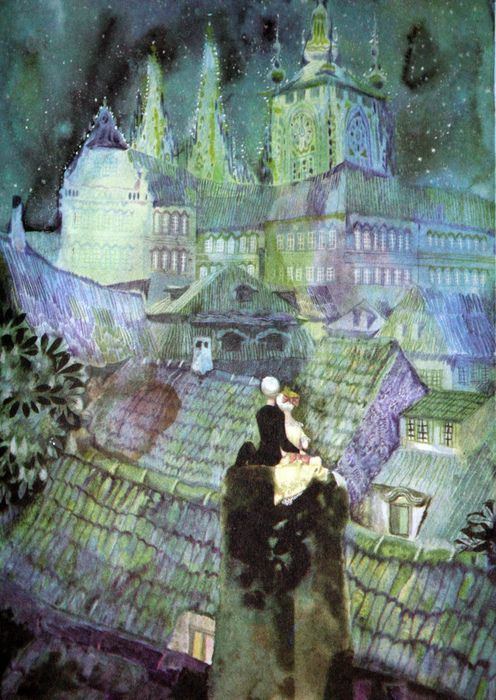6.8 /10 1 Votes
Publication type Fairy tale collection Originally published 7 April 1845 Country Denmark | 3.4/5 Goodreads Publisher C.A. Reitzel | |||||||||||||||||||||||||||||||||
 | ||||||||||||||||||||||||||||||||||
Original title "Hyrdinden og Skorstensfejeren" Published in New Fairy Tales. First Volume. Third Collection. 1845. (Nye Eventyr. Første Bind. Tredie Samling. 1845.) Adaptations The Shepherdess and the Chimneysweep (1952) Works by Hans Christian Andersen The Swineherd, The Flying Trunk, The Tinderbox, The Nightingale, Little Claus and Big Claus | ||||||||||||||||||||||||||||||||||
"The Shepherdess and the Chimney Sweep" (Danish: Hyrdinden og Skorstensfejeren) is a literary fairy tale by Danish poet and author Hans Christian Andersen (1805–1875). The tale follows the romance between a china shepherdess and a china chimney sweep who are threatened by a carved mahogany satyr who wants the shepherdess for his wife. The tale was first published in April 1845 by C.A. Reitzel in Copenhagen, Denmark.
Contents
Plot summary
Two china figurines (a shepherdess and a chimney sweep) stand side by side on a table top. They are in love. Their romance is threatened, however, by the carved mahogany figure of a satyr called "General-clothes-press-inspector-head-superintendent-Goat-legs" living on a nearby cabinet who wants the shepherdess for his wife.
The satyr importunes a porcelain Chinaman on the table (who considers himself the shepherdess' grandfather) to give his consent to the marriage. When the Chinaman agrees to the union, the shepherdess and the chimney sweep flee, clambering down a table leg to the floor. They hide in a toy theater, and, when they emerge, discover the Chinaman has fallen to the floor in attempting to pursue them. The lovers then climb with great difficulty through a stove pipe to the roof, sustained in their flight by a star shining high above them.
When the shepherdess reaches the rooftop and gazes upon the world before her, she takes fright at its vastness, and wants to return to the table top. The chimney sweep tries to dissuade her, but, as he loves her greatly, he finally accedes to her wishes and guides her back to the table top. There, the two discover the Chinaman has been repaired in such a way that he cannot press the shepherdess to marry the satyr. The lovers are safe at last.
Publication
The tale was first published by C.A. Reitzel in Copenhagen, Denmark 7 April 1845 in New Fairy Tales. First Volume. Third Collection. 1845. Other tales in the volume include "The Elf Mound", "The Red Shoes", "The Jumpers", and "Holger the Dane". The tale was republished 18 December 1849 as a part of Fairy Tales. 1850. and again on 30 March 1863 as a part of Fairy Tales and Stories. 1863. The tale has been translated into various languages and published around the world.
Analysis
Like Andersen's "The Steadfast Tin Soldier" and "The Sweethearts; or, The Top and the Ball", "The Shepherdess and the Chimney Sweep" is a tale about a romance between two household objects. While "The Steadfast Tin Soldier" and "The Sweethearts" end unhappily, "The Shepherdess and the Chimney Sweep" ends happily-ever-after. Other Andersen tales about household objects include "The Shirt Collar", and "The Teapot".
